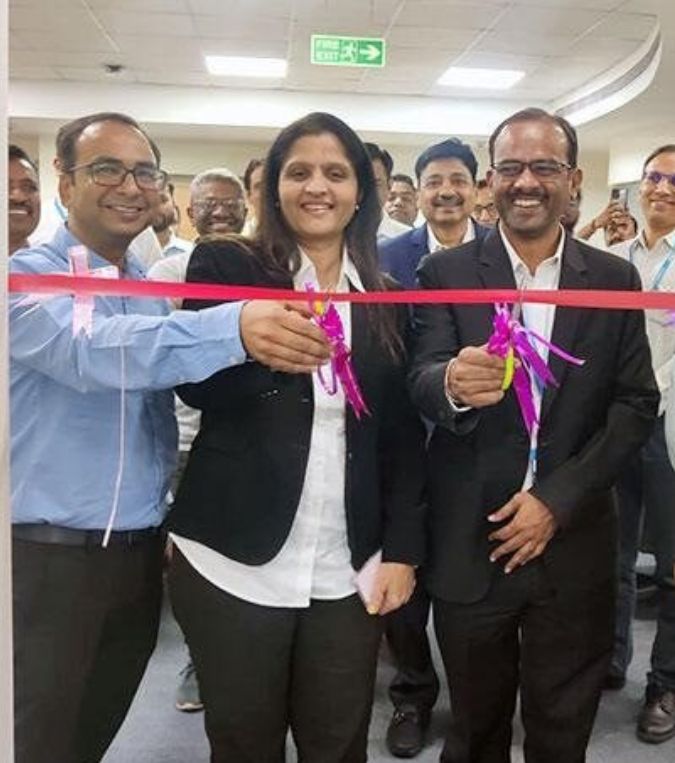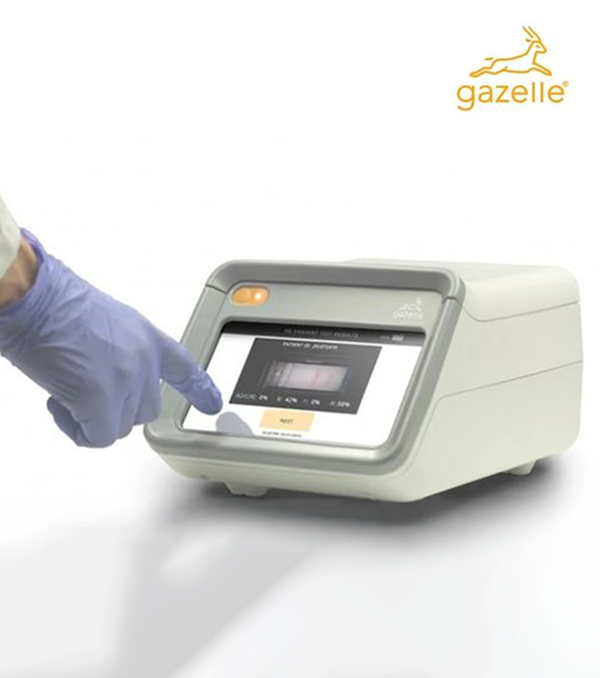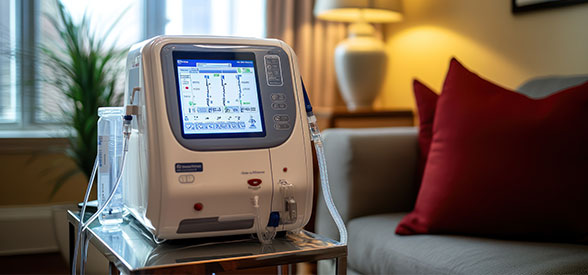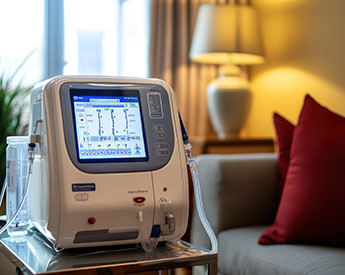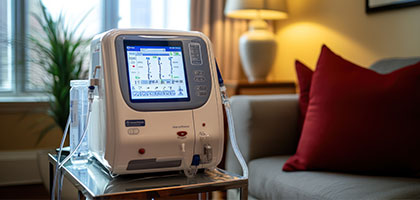Driving Healthcare Transformation Through Front-End Innovation
Tata Elxsi recognizes that in today’s rapidly transforming healthcare landscape, front-end innovation is the key to creating groundbreaking medical devices. By blending user insights, design thinking, and cross-functional expertise, we shape solutions that address unmet clinical needs while meeting rigorous regulatory standards. Our approach fuses early concept ideation with robust engineering capabilities to accelerate each phase of product development.
From patient-centric design to seamless integration of emerging technologies, our front-end innovation framework paves the way for next-generation medical devices. We collaborate with clients to transform ideas into viable prototypes, ensuring every solution is poised for scale and market success.
Pioneering Front-End Innovation for a Next-Gen Home Dialysis Machine


Here’s How We Help
Enhancing product market fit
- Customized design solutions aligned with regional regulations and preferences.
- Conducting in-depth user and market research to address local needs.
- Leveraging clinical insights and competitive landscaping to align products with regional specifications.
Minimizing the risk-to-market
- Early identification of roadblocks through technical landscaping and feasibility testing.
- Rapid prototyping and proof-of-concept (POC) development to mitigate risks
Building a strong business case
- Advanced competitive landscaping to highlight market gaps and opportunities.
- Comprehensive support in preparing detailed business cases to secure funding and drive innovation.
Front-End Innovation Framework

Front-end innovation in medical devices harnesses clinical and user insights to accelerate targeted product development and portfolio diversification. Leveraging a global clinical network for rapid validation and iterative feedback, this integrated approach streamlines innovation, optimizes the NPD funnel, accelerates market entry, and enhances patient outcomes, ensuring competitive advantage.
INVESTIGATE
Assessment & Innovation Strategy
- Competitive benchmarking
- Market & technology trend analysis in specific clinical area
- Regulatory drivers & research strategy w.r.t clinical domain
User-centric Clinical Research
- End-user and SME interviews
- Patient and user journey mapping
- Clinical Insight analysis and opportunity mapping
INNOVATE
Patient-Centric Solutioning
- Design strategy & new concept generation
- Medical Product ideation & feature innovation
- Concept testing & feedback from care providers & patients
MedTech Product Landscaping
- Competitive & technical landscaping
- Technology assessment & risk analysis
- Prototyping & user testing in clinical settings
BUSINESS CASE
Business Case Development
- Potential selling price estimation
- R&D and NRE investment estimation
- ROI and DCF analysis
- Strategy for NPD
Why Tata Elxsi ?
- Comprehensive capabilities spanning innovation, design, and engineering, tailored to medical device product development.
- Expertise across 7+ healthcare segments, including homecare, point-of-care diagnostics, therapeutic, interventional, surgical, respiratory, imaging, and life science.
- Integration of AI/ML, AR/VR, and Gen AI through a dedicated Centre of Excellence.
- Extensive clinical and hospital networks across the USA, Europe, the UK, and other regions.
- ISO 13485-certified partner with a track record of 15+ co-inventions and 100+ patents granted.
- A global team of 300+ designers driving innovative, user-centric medical solutions.
In Vitro Diagnostic Device for the Masses
In Vitro Diagnostic Device for the Masses

Hemex Health
"In our strategic mission to develop and launch a Lab-in-a-Box product, we are delighted to have the right partner in Tata Elxsi who understands the challenges of markets and possesses comprehensive capabilities from concept development to engineering and launch of medical products that meet regulatory standards."
Patti White, Chief Executive Officer
Information Hub
-
How does front-end innovation accelerate medical device development timelines?
Front-end innovation sets a strong foundation by incorporating user insights, clinical validation, and technological feasibility at the earliest stages. This integrated approach helps identify potential risks and critical design considerations before significant resources are allocated. By prioritizing concept refinement, prototyping, and real-world testing, manufacturers can reduce rework and streamline the regulatory path. As a result, front-end innovation not only boosts efficiency but also fosters higher-quality outcomes, enabling faster time-to-market for groundbreaking medical devices.
-
What role does user-centric design play in ensuring patient and physician satisfaction?
User-centric design puts the needs of patients and clinicians at the forefront, allowing medical devices to be more intuitive, comfortable, and efficient. By continually gathering feedback from real-world scenarios, engineers can refine features that address pain points and enhance usability. This iterative approach minimizes the risk of misalignment between intended functionality and actual practice, ultimately fostering trust, acceptance, and positive experiences for both patients and healthcare professionals.
-
What trends are shaping the future of front-end innovation in medical devices?
As healthcare shifts toward personalized, connected, and data-driven solutions, front-end innovation increasingly revolves around AI-driven diagnostics, wearable devices, and remote patient monitoring. Greater emphasis on user experience, continuous patient engagement, and interoperability fuels novel device capabilities. Additionally, sustainability, cost-effectiveness, and faster regulatory approvals are driving the adoption of new materials, manufacturing methods, and collaborative ecosystem partnerships that will redefine the next generation of medical device breakthroughs.
-
How can smaller medical device companies compete effectively in front-end innovation?
Smaller firms can leverage agile processes, niche expertise, and strategic partnerships to compete with larger players. By focusing on unmet clinical needs, adopting design thinking, and rapidly iterating prototypes, they can quickly bring novel concepts to market. Collaborating with external experts, accelerators, or research institutions can bolster technical, regulatory, and marketing capabilities, helping smaller companies remain competitive, capture investor interest, and ultimately deliver innovative, high-value solutions to clinicians and patients.






